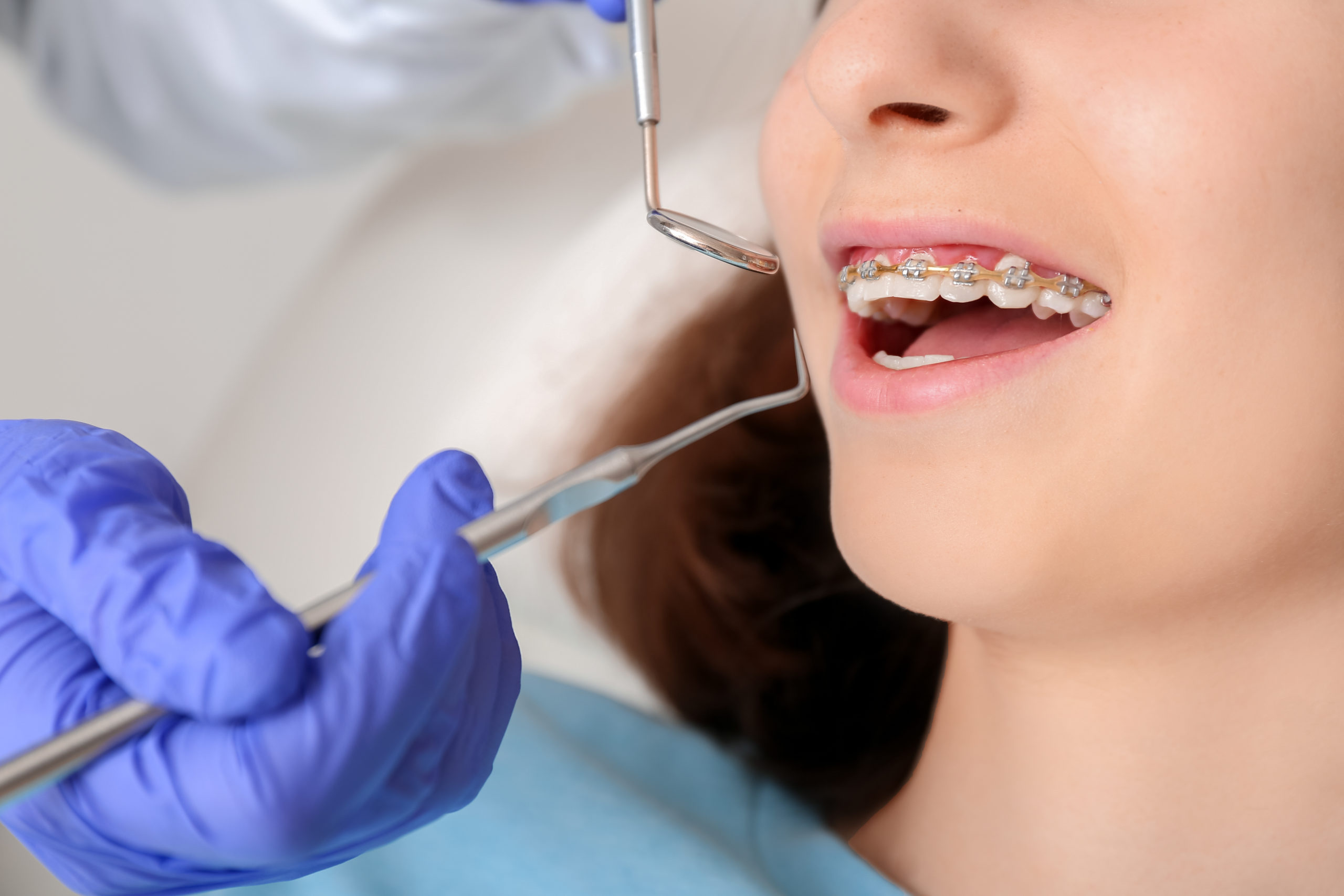How Cumming Orthodontics Addresses Common Braces and Invisalign Issues
How Cumming Orthodontics Addresses Common Braces and Invisalign Issues
Blog Article
Comprehensive Guide to Orthodontics Procedures for Fixing Dental Imbalances
In the world of orthodontics, the trip to achieving a perfectly lined up smile involves a myriad of procedures tailored to fix dental imbalances. From traditional dental braces to unnoticeable aligners and also surgical options, the field of orthodontics supplies a range of remedies to deal with varying degrees of oral irregularities. Understanding the complexities of each treatment, including their devices, advantages, and possible disadvantages, is essential in making notified decisions about one's orthodontic treatment. As we browse through the extensive guide to orthodontic procedures for dealing with dental imbalances, the complex details of each approach will unfold, dropping light on the path towards a unified and practical oral alignment.
Orthodontic Procedures Review

Along with conventional braces and clear aligners, orthodontists might also suggest other treatments like headgear, palatal expanders, or retainers to address specific placement problems (braces). These procedures are tailored to each person's distinct requirements and may entail a combination of therapies to attain the preferred outcomes. Routine modifications and tracking are crucial components of orthodontic therapy to ensure progression gets on track and to make any essential adjustments in the process. By undergoing orthodontic procedures, people can not only accomplish a straighter grin but also improve their overall oral wellness and function.
Standard Braces: Just How They Work
When considering orthodontic therapies for oral imbalances, standard braces stand out as a time-tested approach for fixing teeth placing. Typical braces consist of brackets, cables, and bands that collaborate to apply continuous stress on the teeth, progressively moving them into the wanted alignment. The brackets are affixed to the teeth using an unique adhesive, and the cables are threaded via the braces. By changing the stress of the cables, orthodontists can regulate the instructions and force related to each tooth, directing them right into correct alignment in time.
As stress is applied to the teeth via the braces, the bone surrounding the teeth is reshaped to support the new tooth positions. Patients will require routine changes at the orthodontist's workplace to make sure the braces continue to apply the appropriate pressure for efficient teeth motion.
Undetectable Aligners: Benefits And Drawbacks
These clear, tailor-made trays are practically unseen when put on, making them an appealing option for individuals seeking a more cosmetically pleasing orthodontic treatment. Patients can get rid of the aligners prior to eating or cleaning their teeth, minimizing the danger of official site food getting stuck in the appliance and simplifying the cleansing process.

Surgical Orthodontic Options
Surgical interventions in orthodontics existing viable alternatives for attending to intricate dental misalignments that may not be effectively solved via conventional orthodontic treatments. While traditional dental braces and unseen aligners can fix several orthodontic concerns, certain instances need surgical intervention to achieve optimal outcomes. Surgical orthodontic choices are usually suggested for severe malocclusions, substantial jaw discrepancies, and cases where the underlying bone framework requires modification to attain proper placement.
One usual surgical orthodontic procedure is orthognathic surgical treatment, which involves rearranging the jaws to fix practical concerns such as trouble speaking or eating. This surgical treatment is frequently carried out in cooperation with an orthodontist that helps straighten the teeth prior to and after the procedure. Surgical orthodontics might additionally include procedures to subject influenced teeth, eliminate excess periodontal tissue, or reshape the jawbone to create a much more harmonious face account.
Prior over at this website to considering medical orthodontic options, individuals undergo a thorough examination to identify the requirement and potential benefits of such interventions. orthodontics. While surgical procedure might appear overwhelming, it can considerably improve both the feature and looks of the smile in instances where standard orthodontic therapies fall short
Retainers and Post-Treatment Care

Failure to abide with post-treatment care instructions can result in relapse, where the teeth progressively relocate back in the direction of their original settings. Regular retainer wear, great dental health, and normal dental exams are crucial for maintaining the outcomes accomplished via orthodontic surgical treatment and making certain the long-term security of the fixed oral positioning.
Verdict
In verdict, orthodontic procedures use different choices for dealing with dental misalignments. Surgical orthodontic alternatives are available for much more serious imbalances. Overall, orthodontic procedures can effectively enhance oral health and wellness and visual look.
As we browse with the extensive guide to orthodontic treatments for correcting oral misalignments, the intricate information of each method will certainly unfold, dropping light on the path toward a unified the original source and functional oral placement. - aligners
One of the most typical orthodontic treatments is the usage of braces, which are composed of metal brackets and cords that use mild pressure to progressively change teeth right into the wanted position.When thinking about orthodontic treatments for oral imbalances, standard dental braces stand out as a reliable approach for fixing teeth positioning. Furthermore, unnoticeable aligners might not be suitable for intricate orthodontic problems that call for even more considerable teeth activity, as they are commonly recommended for mild to modest cases. Retainers are customized orthodontic tools designed to hold teeth in their remedied positions after the conclusion of orthodontic treatment.
Report this page